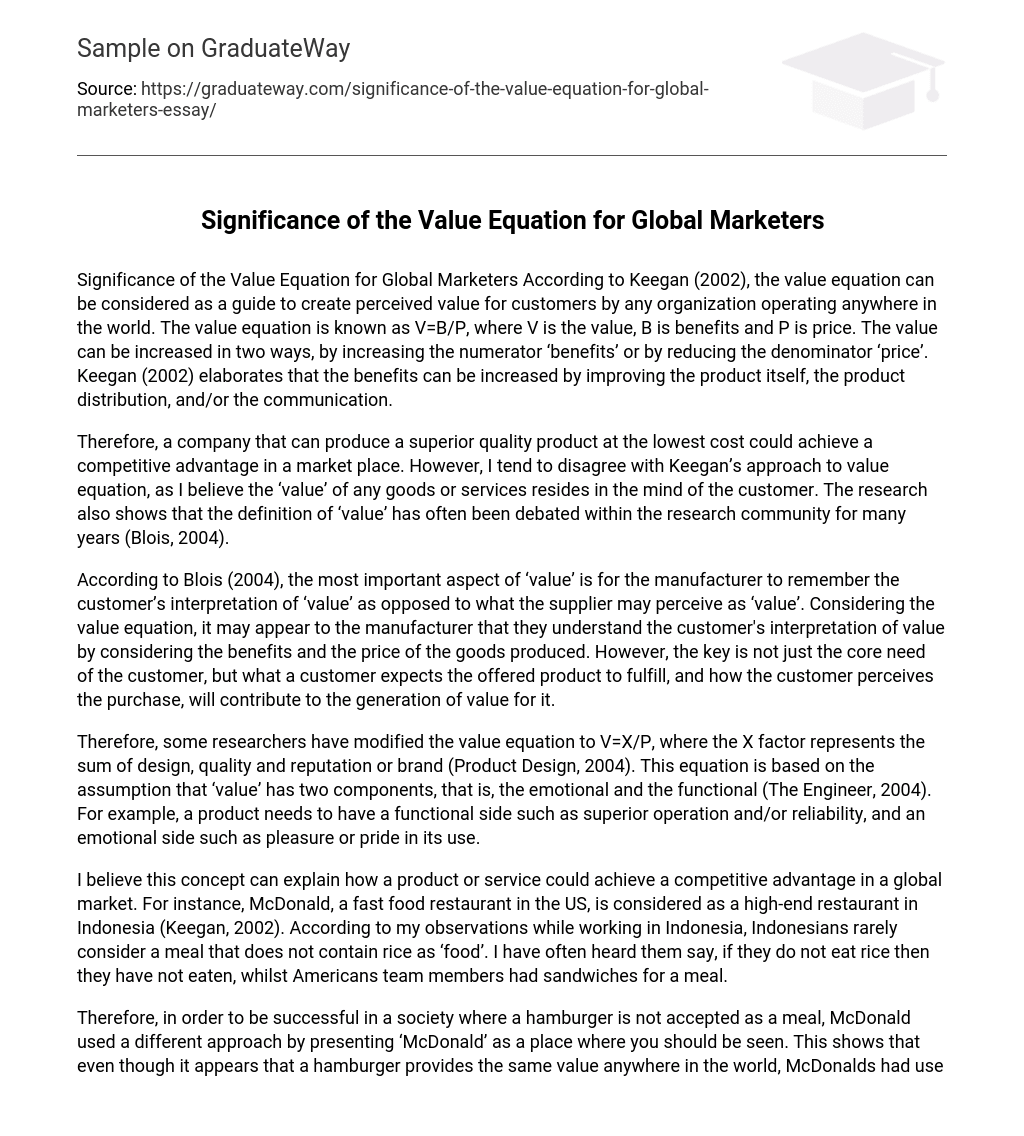Keegan (2002) states that the value equation (V=B/P) acts as a global framework for organizations to generate perceived value for customers. The equation can be deconstructed as follows: V denotes value, B represents benefits, and P signifies price. By either increasing the numerator of benefits or decreasing the denominator of price, organizations can enhance value. Keegan (2002) further elaborates that benefits can be amplified through product enhancement, improved product distribution, and enhanced communication.
Although it is possible for a company to achieve a competitive edge by manufacturing a product of excellent quality at a reduced price, I hold a different viewpoint from Keegan regarding the value equation. In my perspective, the customer’s perception determines the worth of goods and services. Furthermore, researchers have long debated the definition of ‘value’ (Blois, 2004).
According to Blois (2004), manufacturers should prioritize the customer’s understanding of ‘value’ over their own perception. While manufacturers may believe they understand how customers interpret value by assessing product benefits and price, it is important to also consider what customers expect the product to achieve and how they perceive the purchase. Ultimately, this consideration will help generate value.
Some researchers have revised the value equation to V = X/P, where X represents the combined value of design, quality, and reputation or brand (Product Design, 2004). This equation assumes that ‘value’ consists of both emotional and functional elements (The Engineer, 2004). For instance, a product must offer functional benefits like superior operation and reliability, as well as emotional benefits like the enjoyment or sense of pride it brings to its users.
The concept I believe in can explain how a product or service can gain a competitive advantage in the global market. According to Keegan (2002), McDonald’s, a fast food restaurant in the United States, is perceived as a high-end restaurant in Indonesia. During my time working there, I observed that Indonesians typically view meals without rice as not being truly “food”. They commonly express the belief that if they haven’t eaten rice, they haven’t really eaten. Conversely, American team members frequently opt for sandwiches during meal times.
McDonald’s succeeded in a society where a hamburger is not seen as a meal by positioning itself as an establishment to be noticed. This showcases that McDonald’s utilized its reputation in Indonesia to elevate the worth of its product, despite the hamburger having equal value globally. Furthermore, if consumers believe that purchasing a product will benefit humanity, its value can also be augmented by adopting a humanitarian or environmental standpoint.
Nevertheless, these aspects can also be perceived as intangible ‘benefits’, thus maintaining the relevance of the value equation even in such cases. However, it is difficult to determine the intangible benefits that can give a competitive advantage in the global market. Thus, I contend that comprehending ways to enhance ‘value’ and leveraging a blend of ‘benefit’ and ‘price’ can play a vital role in attaining a competitive edge in the global market.





